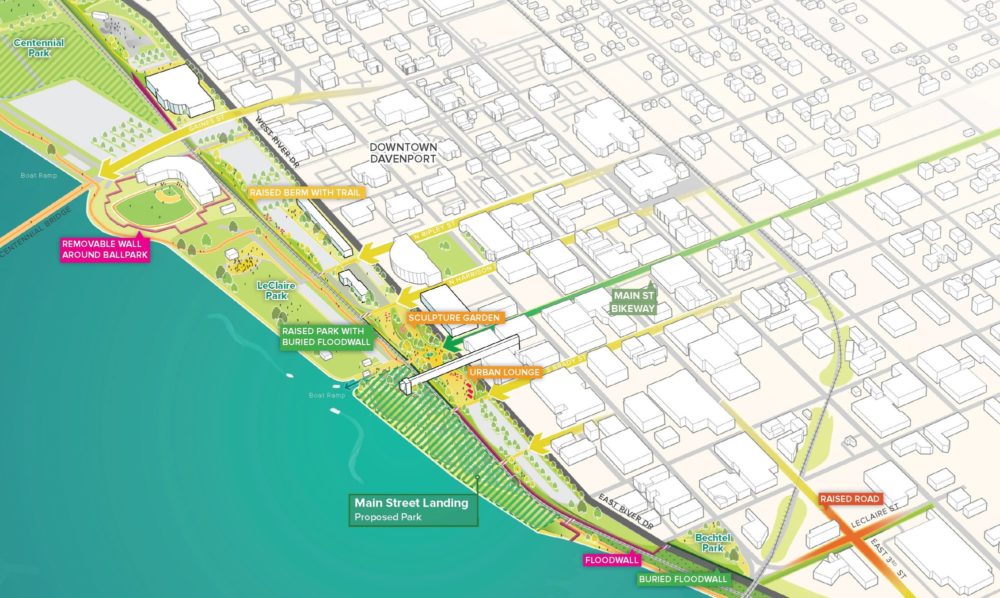
Mississippi River Flood Resiliency Plan
Davenport, IA
 Sasaki
Sasaki
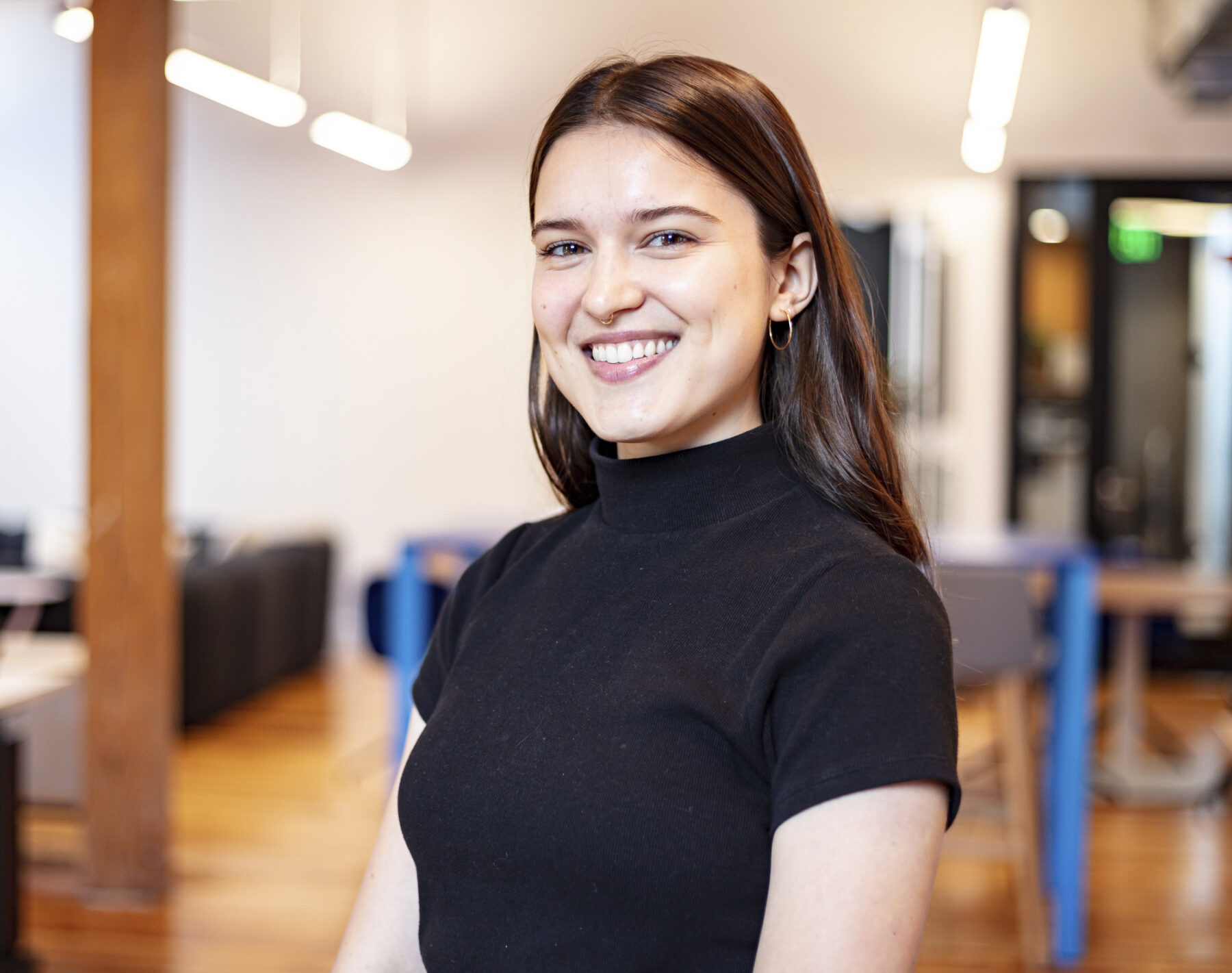
Moving the needle on sustainability begins with the choices we make in our daily lives. For Sasaki Engineer-in-Training Autumn Faitak, those small choices can ripple into waves of change for cities around the world.
Engineer, designer and inventor Bucky Fuller once said that “the best way to predict the future is to design it.” His quote encapsulates the optimism and steadfast approach of Sasaki Civil Engineer-in-Training Autumn Faitak. Based in our New York studio, Autumn graduated with a Bachelor of Engineering from McGill University, driven by an early interest in city making and placemaking.
Today, Autumn is working on projects across the United States that bring together her passion for climate change, resilience, and shaping people’s lives for the better.
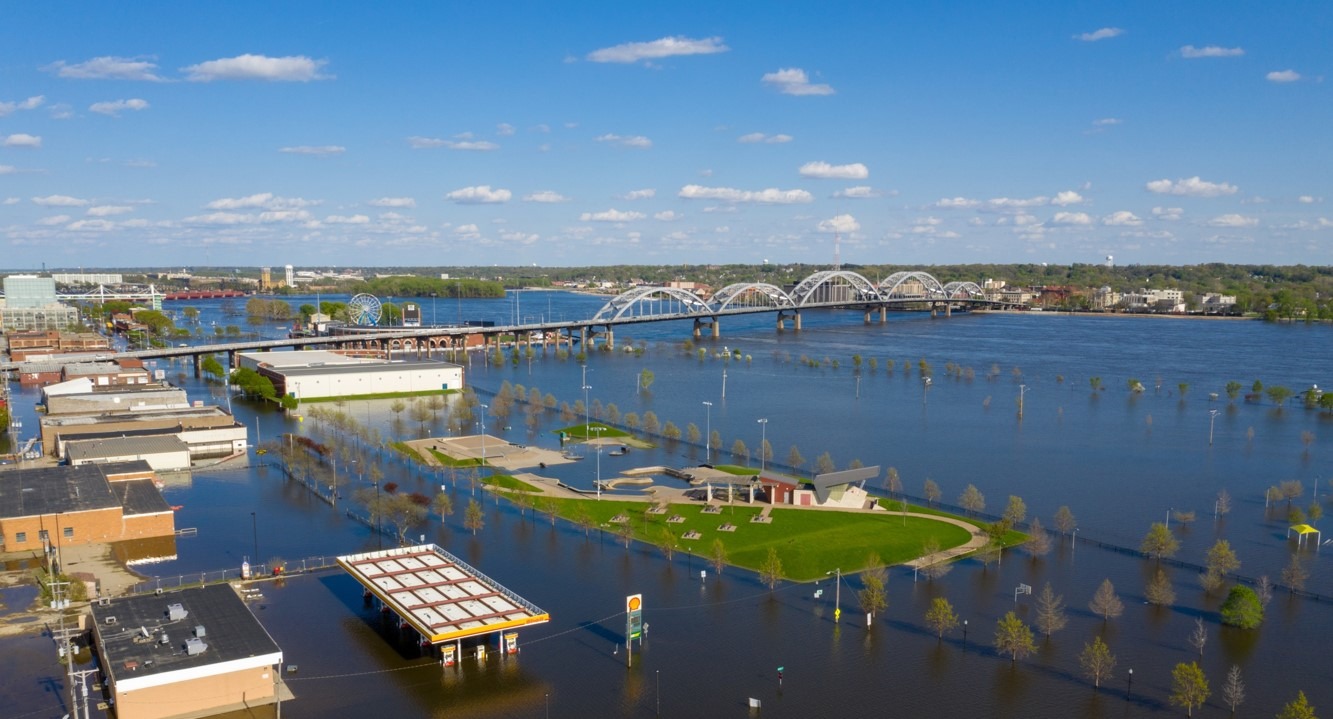
The City of Davenport, Iowa, experienced record flooding in 2019 when the Mississippi River flooded the city’s riverfront for 103 days of the year and reached a new record crest. Sasaki collaborated with the Davenport Public Works team and the community to develop a Resiliency Plan that identifies a mix of built structure and other solutions for flood mitigation.
When I first signed up and picked my major, I knew I enjoyed math and science, so I chose an engineering route. However, I didn’t actually sign up for a specific discipline of engineering. I was lucky that I was able to take a few classes and explore different disciplines further. After my first year, civil engineering wound up being my first choice. What really caught my eye was water resources and transportation engineering. They go hand-in-hand, and they lead to larger ideas about city making and placemaking that were really inspiring to me.
After graduating, I worked with infrastructure and economic data to help city-makers quantify the impacts of proposed development on walkability. From there, I found myself in the land development industry that was often resulting in more developed land and less green space, and I realized it wasn’t work that I felt aligned with.
It was then that I found a posting for a job at Sasaki, and it was everything that I’ve been looking for: the intersection of landscape architecture, urban planning, water resources, and building green infrastructure!
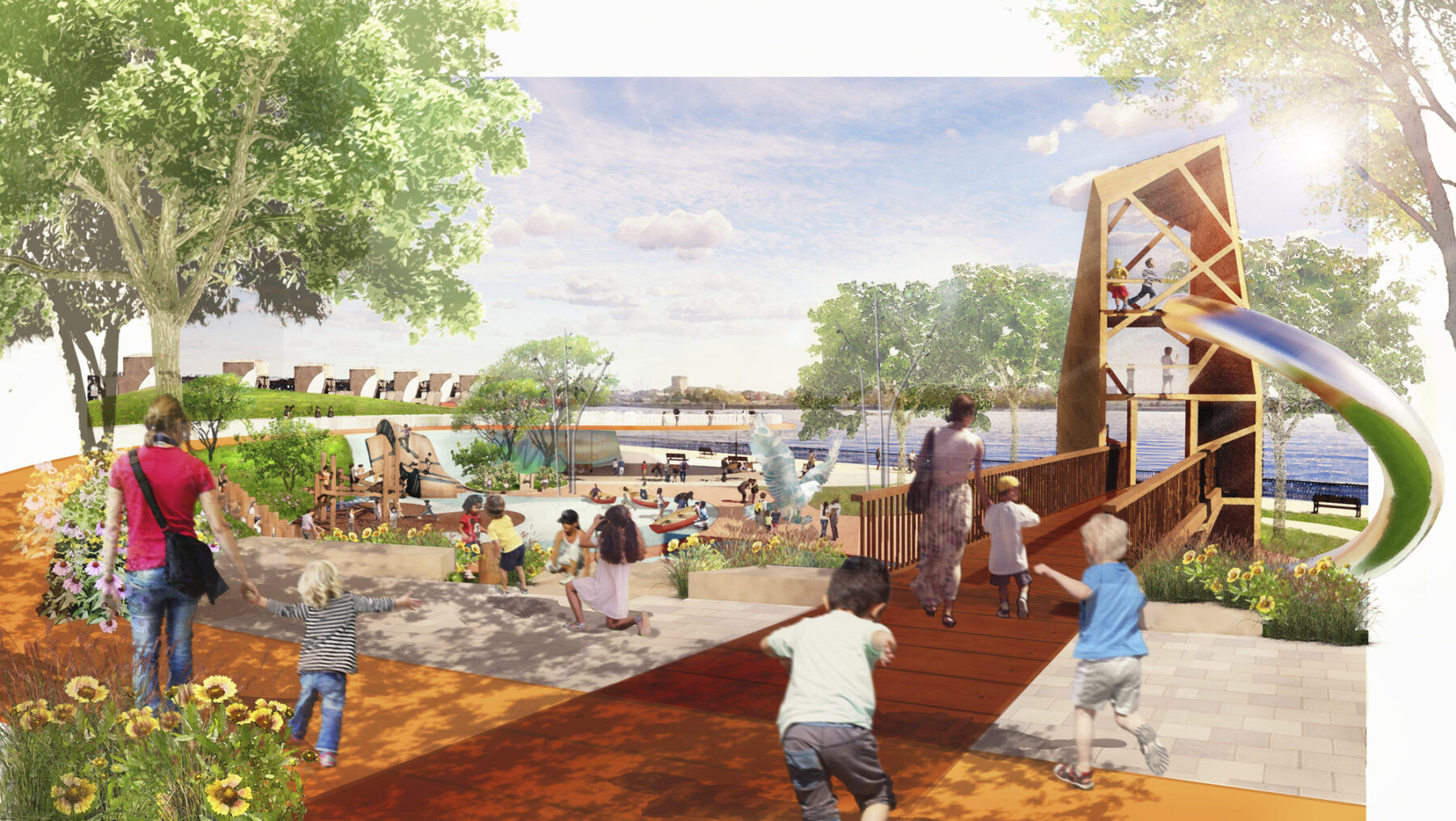
Autumn’s work at Sasaki included the Davenport Main Street Landing in Iowa
I think it goes hand-in-hand with placemaking. I’m inspired by the idea of impacting people’s lives and taking real steps towards addressing climate change and environmental issues. I keep coming back to how engineering and design can impact your day-to-day life. Living here in New York, there are so many opportunities to solve issues in infrastructure and resiliency that can become a model approach for other cities.
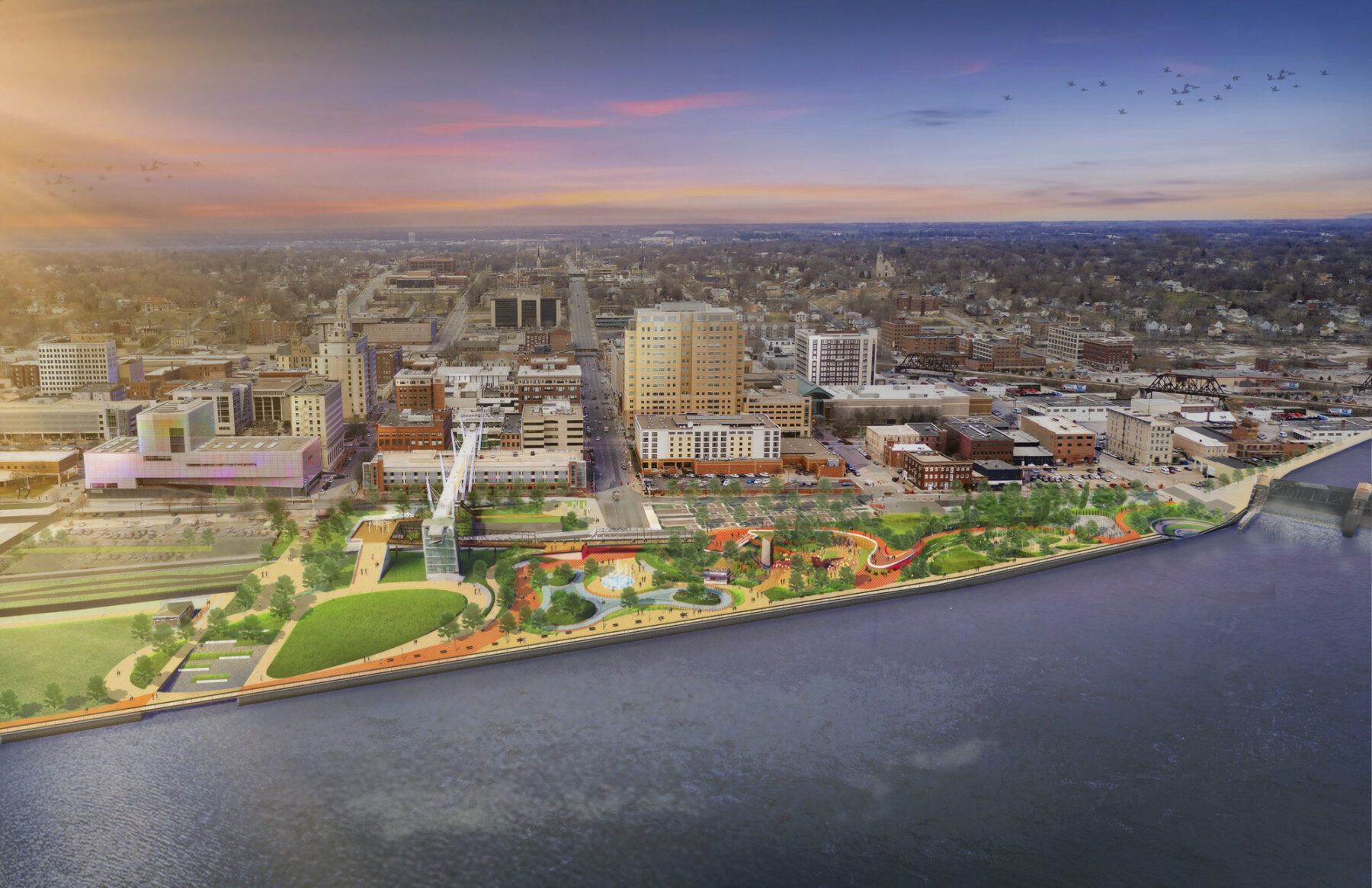
Sasaki’s plan for a more flood resilient, accessible, and beautiful riverfront for Davenport, Iowa
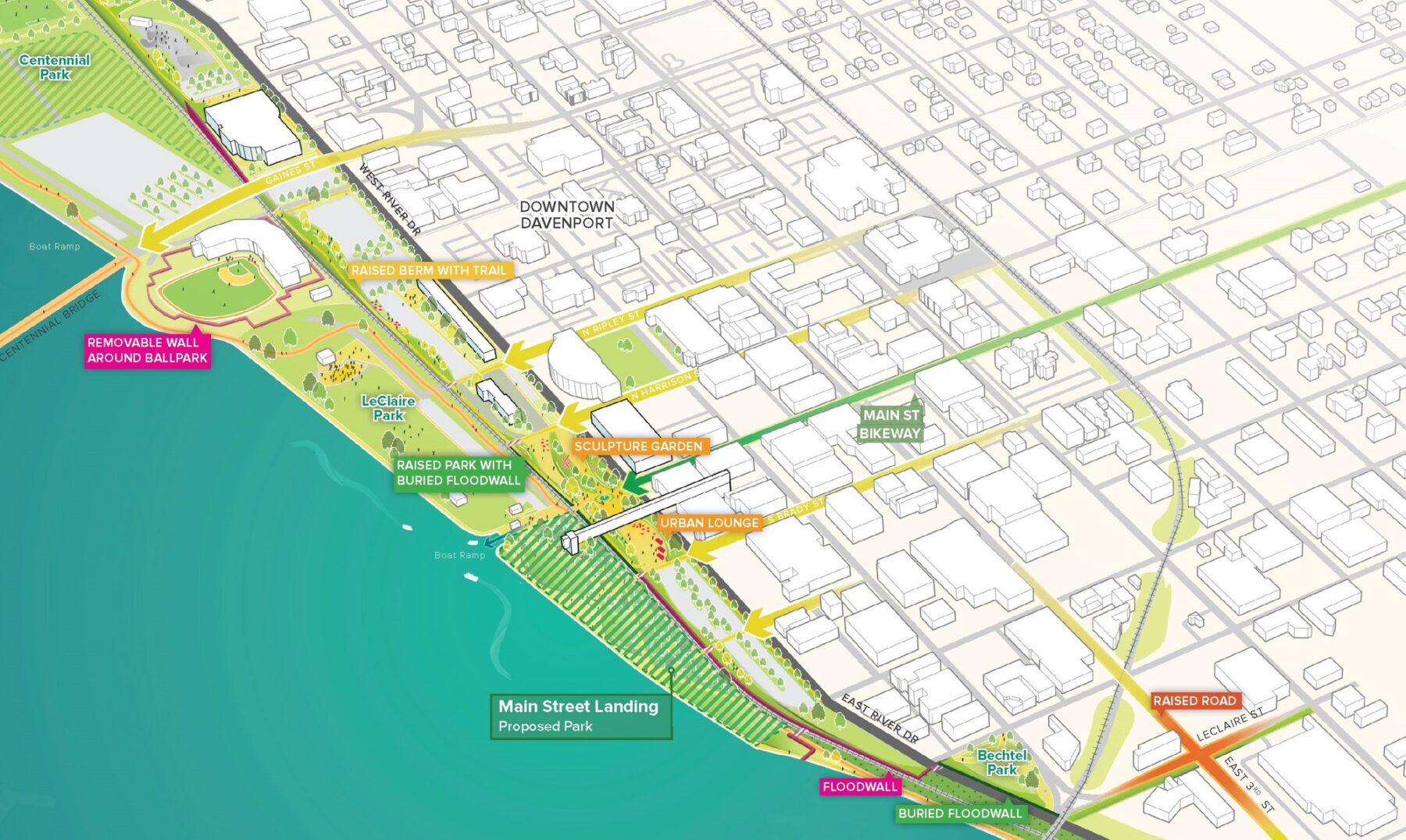
Along Davenport’s riverfront, the plan includes a line of protection in elevated open spaces or trail connectors
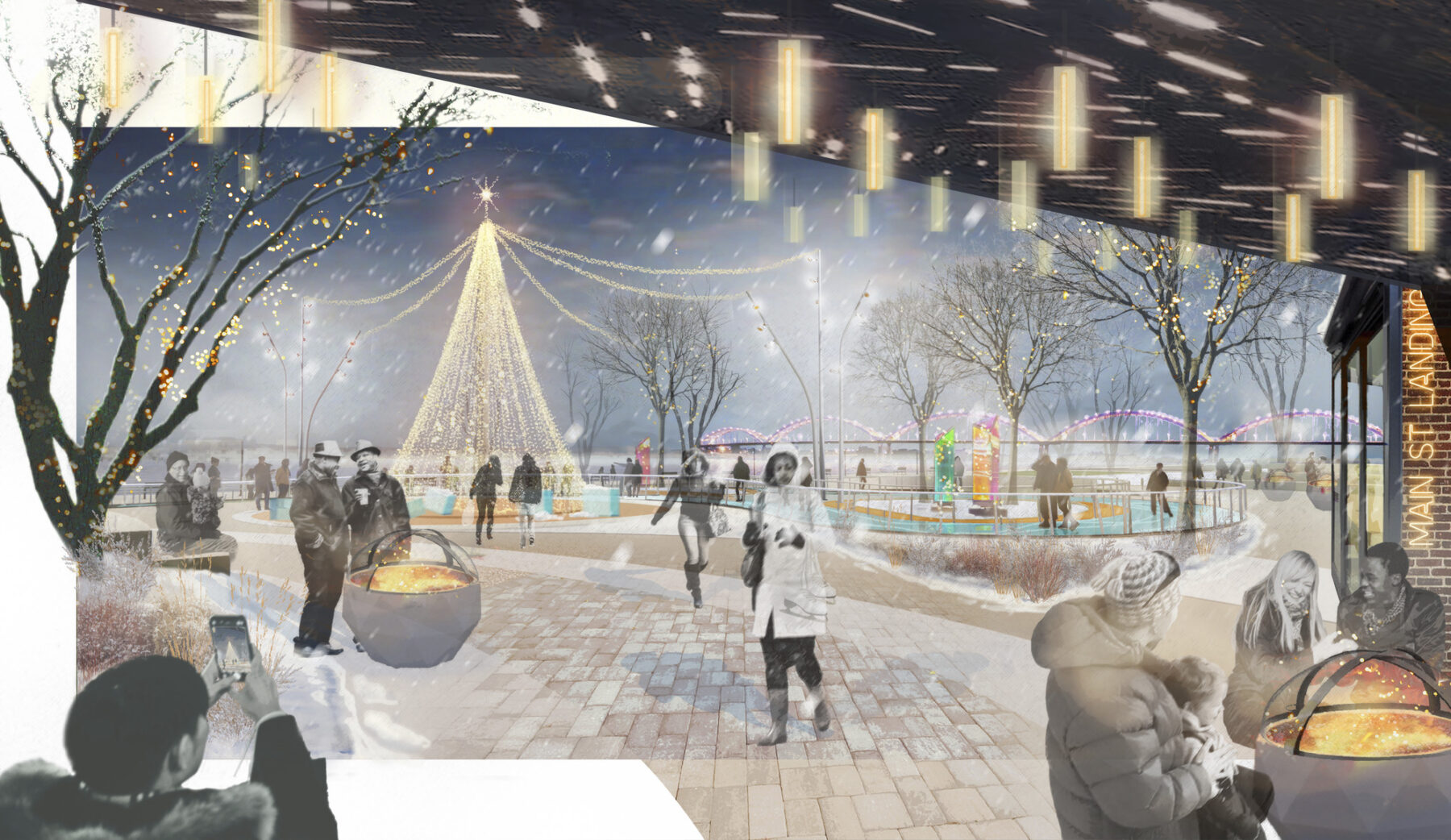
The design draws from a toolbox of flood mitigation measures, both above and below ground, that integrate with public space
Sasaki’s plan for a more flood resilient, accessible, and beautiful riverfront for Davenport, Iowa
Along Davenport’s riverfront, the plan includes a line of protection in elevated open spaces or trail connectors
The design draws from a toolbox of flood mitigation measures, both above and below ground, that integrate with public space
In some of my past experiences, project teams would consider civil engineering as the first step and everything else should come after that. We would send our design to a landscape architect and without much discussion, they’d place plantings, and the project would move along. Here at Sasaki, the approach is totally different. We truly collaborate and work together. Hard infrastructure doesn’t dictate landscape; design is a fluid process where the best ideas come together and inform one another. I think it goes back to the firm’s founding, the idea that having more voices at the table makes our process richer.
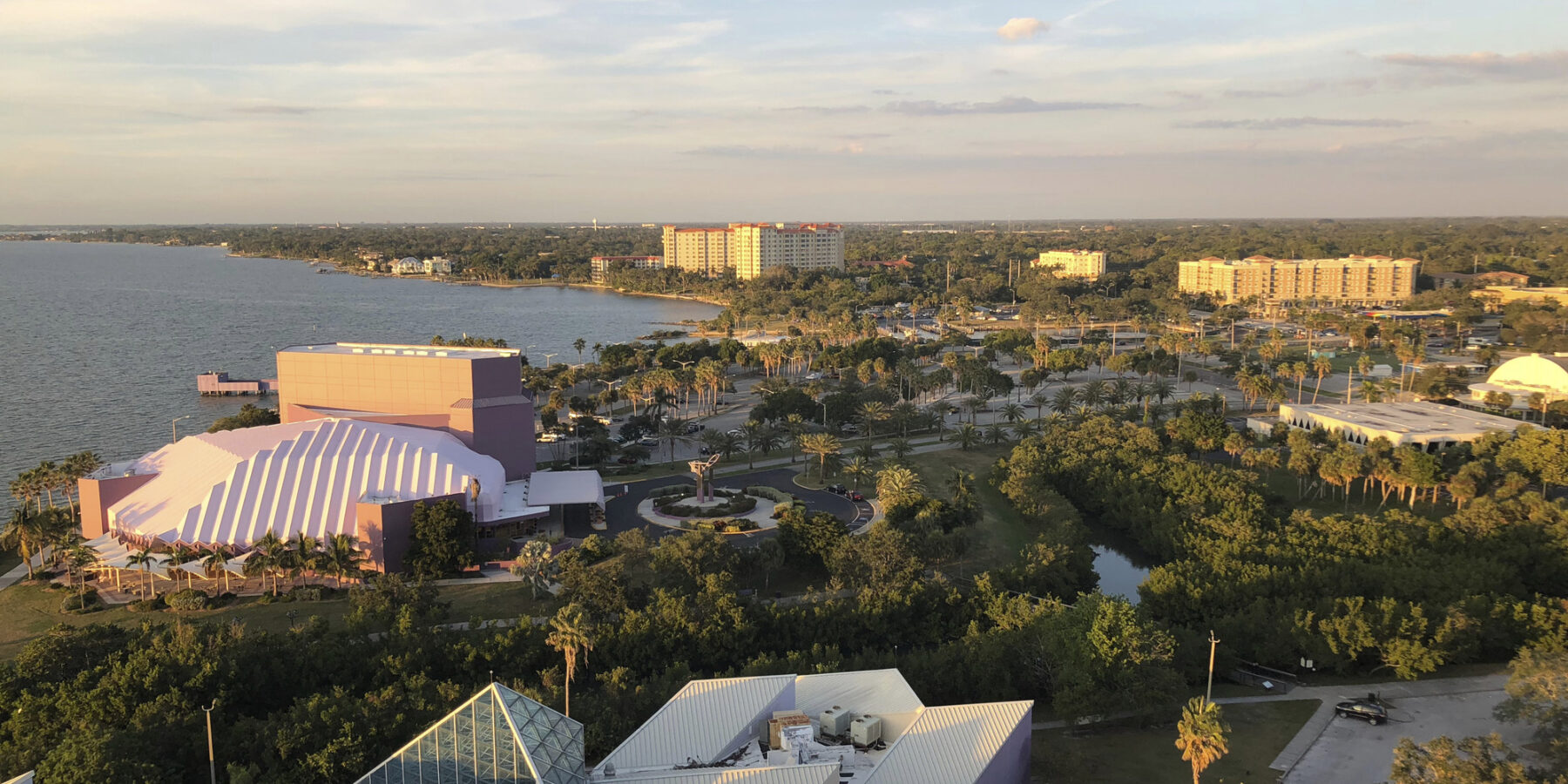
The Sarasota Bayfront Master Plan lays the groundwork to transform a 53-acre, city-owned site on the stunning “Cultural Coast” of Florida into a more inclusive and welcoming community waterfront destination
"A lot of people want a job that feels like they’re making an impact in some way, and not everyone gets that. I do."
I’ve had a hand in a range of projects across the United States. I’m currently working on the Davenport Main Street Landing along the Mississippi River, and it’s pretty unique because the project site and surrounding city floods for a good part of the year. It presents an interesting dynamic of designing stormwater. We know that the site is going to flood regardless of what infrastructure we design, but we’re making intentional decisions to lessen the impact on the park. I’ve also been heavily involved in the grading for this project, so I feel especially intertwined with landscape architects because we can design the grading, planting and drainage in sync, which feels great.
There’s also Sarasota Bayfront Park, which has multiple phases, which presents a lot of puzzle pieces with different scopes and timelines that will eventually become one cohesive design. There is a great need and interest for green infrastructure design which gives us civil engineers a lot of creative freedom to pull out all the sustainable stormwater stops.
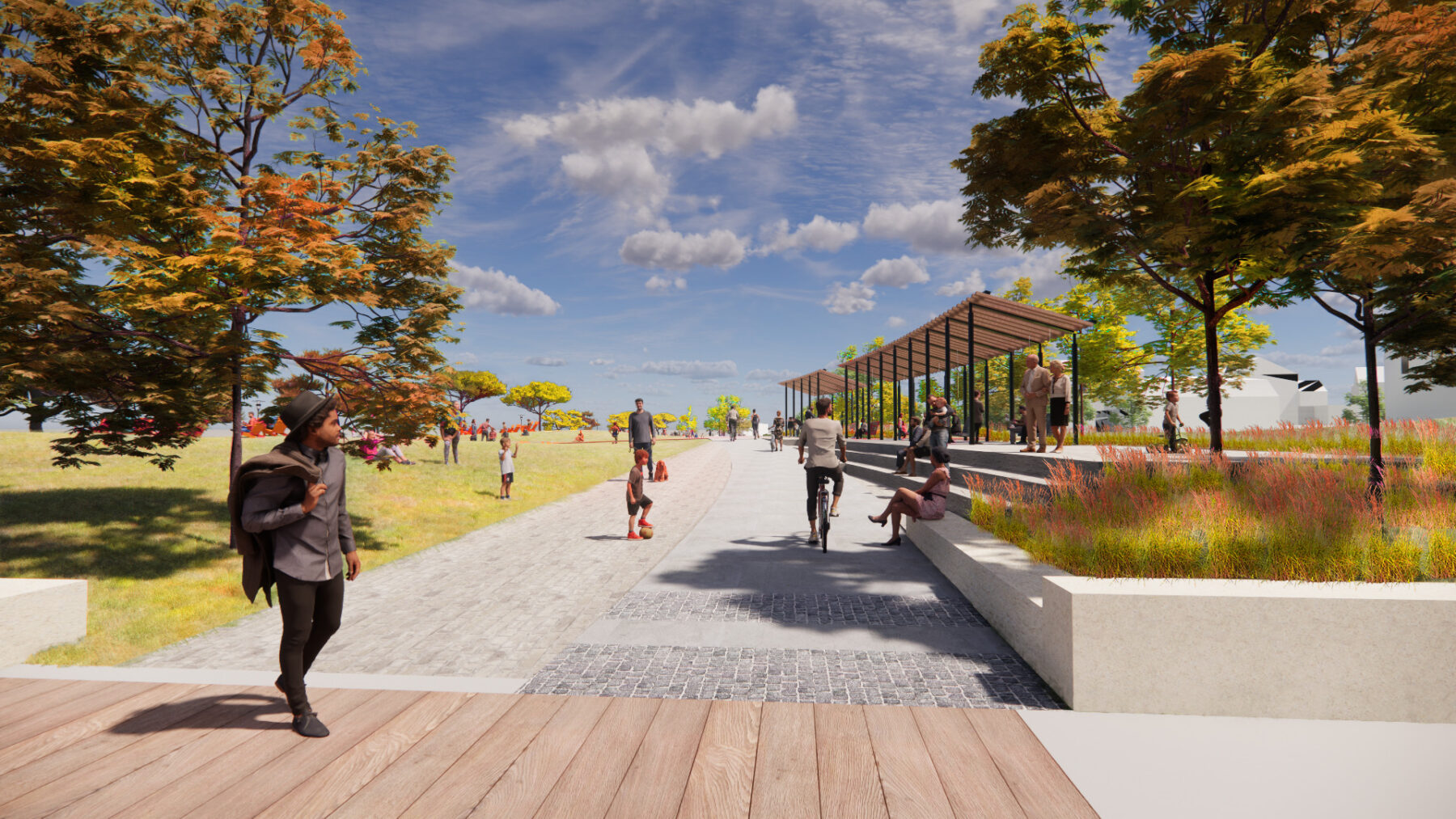
Newburyport Market Landing Park
When we think about design as either a singular object or proposal, or an interconnected system, civil engineering for me is definitely in the latter category. Sometimes I wind up feeling like a bit of a realist in the design process, bringing people or ideas back down to earth. But it’s important that our designs don’t flood, that they are safe for people, and at their best, that they give something back to a city or a place. We can realize our ambitions with grounded approaches that are well detailed and thought out; it’s through integrated design that we can bring big ideas to life.
When I think about sustainability and the most pressing issues of our time, I think there is going to be an abundant need for this type of role. It’s really meaningful, important work. It’s evident in increased weather patterns and storms impacting cities in ways that we’ve never seen before. Our infrastructure isn’t designed for changing climates. It’s why I feel this is so important, and why I’m passionate about it. A lot of people want a job that feels like they’re making an impact in some way, and not everybody gets that. I do, and I realized it’s the small choices we make that can change lives and shape cities for the better.